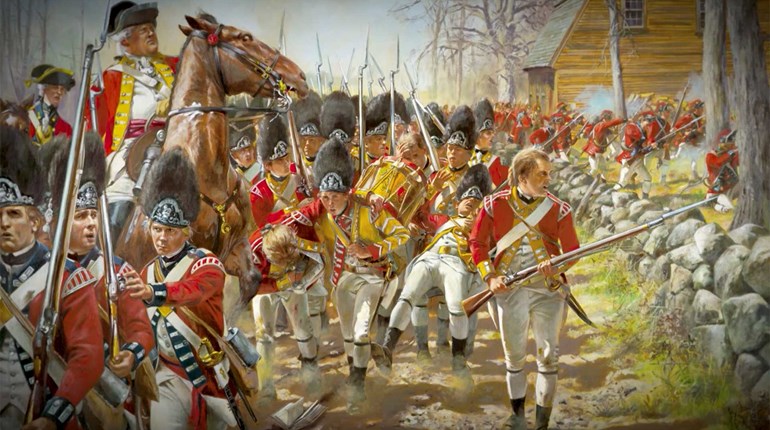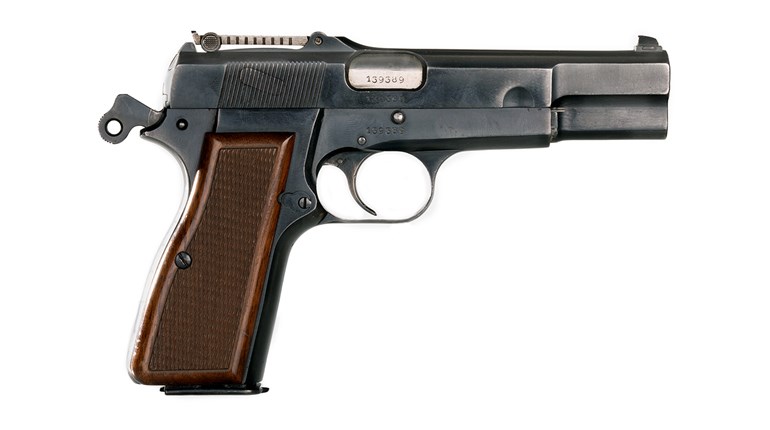
Not too long ago, a dear friend of mine, an Army Reserve captain, was visiting me, and the subject of carry guns came up. He was partial to his Glock, and he wanted to know what my favorite daily carry pistol was. Without hesitation, I said it was the Colt Model M in .32 ACP.
“What is a Model M?” he asked.
“The Colt Model 1903/1908 Pocket Hammerless in .32 ACP or .380 ACP.” I replied, and proceeded to show him a photo of one on Wikipedia.
“Oh, that pistol. My grandfathers each have one. The Army gave them to them when they became generals.”
“Your grandfathers are generals?” I asked.
“Well, one is a three-star, the other is a four-star,” he replied.
After I picked up my jaw from the floor, I reached over to the bookshelf and pulled out a copy of Williams & Brunner’s book, “U.S. General Officer Pistols.” Sure enough, both generals and their pistols were listed.
As a fan of the Model M, to me, the ultimate collectibles are those marked “U.S. Property” on the right side of the frame. Between 1903 and 1940, Colt manufactured more than 540,000 in .32 ACP, and between 1908 and 1940, the company produced in excess of 134,000 in .380 ACP. However, between 1944 and 1945, only 4,000 were made that were eventually issued to general officers. In 1972, the U.S. Army ran out of Model Ms to give to generals and started issuing other models, notably those from the Rock Island Arsenal, Smith & Wesson and Beretta.

Three thousand other Model Ms marked “U.S. Property” were purchased by the government during the war and issued mostly to the Office of Strategic Services (OSS) for use by its clandestine operatives. But, to find one that was issued to a general, complete with the kid-leather belt and holster, tongue and wreath gold buckle, all in their original kraft cardboard boxes, is still an unfulfilled dream of mine as a collector.
The story of the Colt Model M starts, as most good gun stories start, at the work bench of John Moses Browning in Utah around the turn of the last century. His popular FN model of 1900 was the toast of Europe, and Colt desired him to fashion a similar pistol for North American sales. The popular .32 ACP was popular for personal defense at the time, and Browning created the Pocket Hammerless in what was marked and marketed with the line: “CALIBRE .32 RIMLESS SMOKELESS.” In 1908, it was followed up with a new model that chambered the increasingly popular .380 ACP. The thin frame, 4-inch barrel, light weight (24 ounces) and lack of an external, exposed hammer (it has an internal hammer) made this gun an ideal pocket-carry piece. Colt had steady sales of more than 12,000 units per annum for nearly 40 years, before World War II put an end to civilian sales and manufacturing was turned over to military production.

And, of course, there is the allure of popular culture to consider. Hardly a “gangster” film of the 1930s would have been complete without at least one of the bad guys flashing his handgun, which would invariably
be a Model M.
So, for those of you who have a Model M sitting in a drawer, take it out, ensure it is unloaded and then inspect the serial number. If its above 550,000 on a .32 ACP or 134,000 on a .380 ACP and has “U.S. Property” stamped on the right side of the frame, you might have a pistol that was issued to a general officer between 1944 and 1972. You can check out Williams & Brunner’s book for a list of the issued serial numbers.
If you want to find out if yours was issued to the OSS, I suggest you acquire Charles W. Pate’s outstanding reference, “U.S. Handguns of World War II” and read about the secret proof mark that is found on the OSS pistols, because I’ve been sworn to secrecy.




































